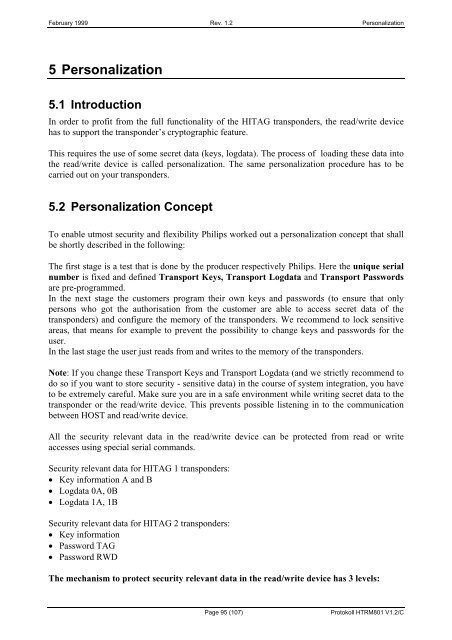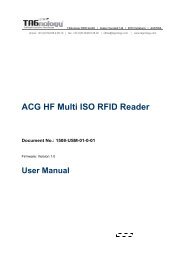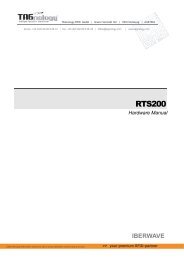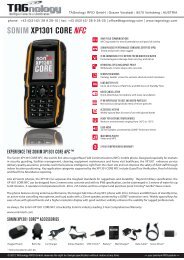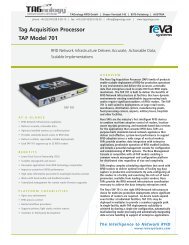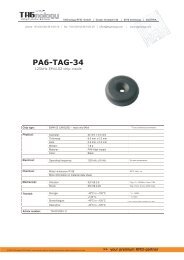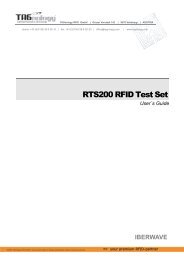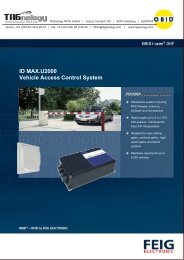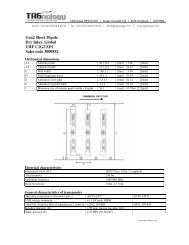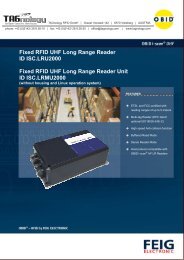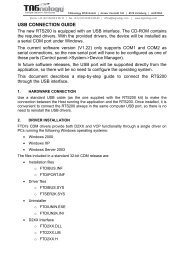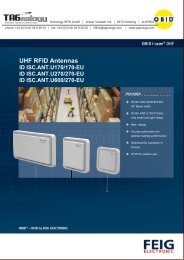TAGnology_TAGid -125kHz_Protocol.pdf - RFID Webshop
TAGnology_TAGid -125kHz_Protocol.pdf - RFID Webshop
TAGnology_TAGid -125kHz_Protocol.pdf - RFID Webshop
You also want an ePaper? Increase the reach of your titles
YUMPU automatically turns print PDFs into web optimized ePapers that Google loves.
February 1999 Rev. 1.2 Personalization<br />
5 Personalization<br />
5.1 Introduction<br />
In order to profit from the full functionality of the HITAG transponders, the read/write device<br />
has to support the transponder’s cryptographic feature.<br />
This requires the use of some secret data (keys, logdata). The process of loading these data into<br />
the read/write device is called personalization. The same personalization procedure has to be<br />
carried out on your transponders.<br />
5.2 Personalization Concept<br />
To enable utmost security and flexibility Philips worked out a personalization concept that shall<br />
be shortly described in the following:<br />
The first stage is a test that is done by the producer respectively Philips. Here the unique serial<br />
number is fixed and defined Transport Keys, Transport Logdata and Transport Passwords<br />
are pre-programmed.<br />
In the next stage the customers program their own keys and passwords (to ensure that only<br />
persons who got the authorisation from the customer are able to access secret data of the<br />
transponders) and configure the memory of the transponders. We recommend to lock sensitive<br />
areas, that means for example to prevent the possibility to change keys and passwords for the<br />
user.<br />
In the last stage the user just reads from and writes to the memory of the transponders.<br />
Note: If you change these Transport Keys and Transport Logdata (and we strictly recommend to<br />
do so if you want to store security - sensitive data) in the course of system integration, you have<br />
to be extremely careful. Make sure you are in a safe environment while writing secret data to the<br />
transponder or the read/write device. This prevents possible listening in to the communication<br />
between HOST and read/write device.<br />
All the security relevant data in the read/write device can be protected from read or write<br />
accesses using special serial commands.<br />
Security relevant data for HITAG 1 transponders:<br />
• Key information A and B<br />
• Logdata 0A, 0B<br />
• Logdata 1A, 1B<br />
Security relevant data for HITAG 2 transponders:<br />
• Key information<br />
• Password TAG<br />
• Password RWD<br />
The mechanism to protect security relevant data in the read/write device has 3 levels:<br />
Page 95 (107)<br />
Protokoll HTRM801 V1.2/C


